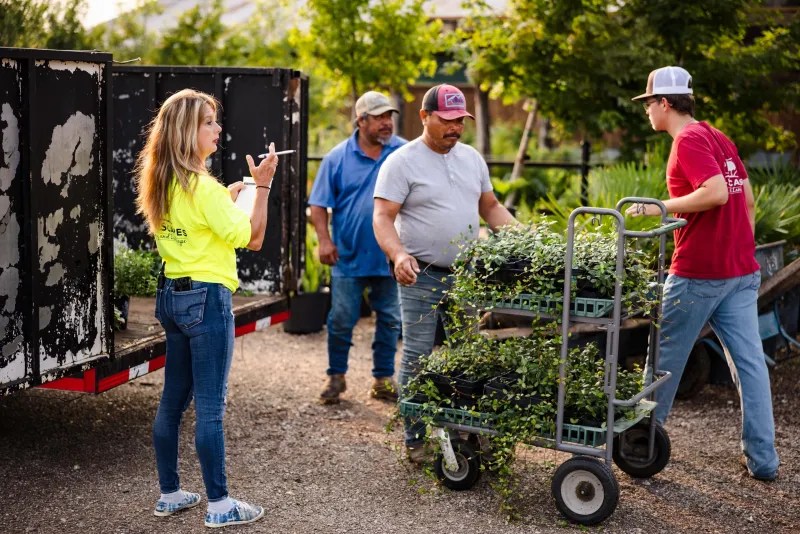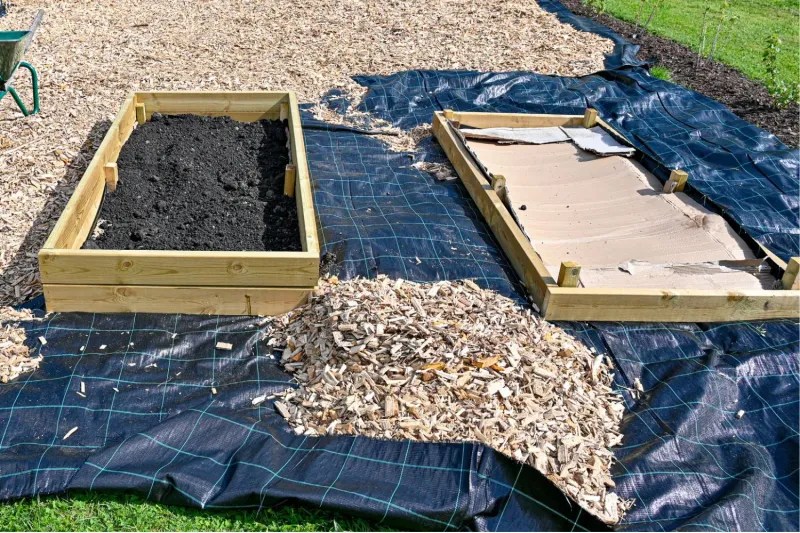ramp up raised beds for gardening does n’t have to break the bank . Here are twelve creative and cost - efficient crown to help you create beautiful and operative raised beds without spending a destiny .
Whether you ’re using reclaimed materials or innovative methods , there ’s a solvent for every budget - conscious gardener .
1. Use Reclaimed Wood
scour for reclaimed wood can be a rewarding treasure hunt . Old fence panels , pallets , or pack of cards boards can find a second life in your garden . insure your chosen wood is free of harmful chemical by avoiding painted or pressure - process wood that is n’t labeled safe for gardening . Local building sites frequently discard flake Grant Wood , hit them a gold mine for resourceful gardener . Explore Craigslist or Facebook Marketplace , where generous mortal offer free materials from clip to time . These platform are perfect for connecting with those look to unload excess cloth , often for free or very crummy .
2. Repurpose Pallets
Pallets , often discarded by garden center , hardware stores , or cargo ships companies , offer a sturdy foundation for raised layer . They must be stamped ‘ HT ’ ( heating system - address ) , signify a chemical substance - free status . Ever weigh who might have these destitute pallets ? You ’d be surprised . Engage with local businesses , and you may find piles of them quick for you to haul away . It ’s a win - win billet : you clear their space , and you gain free textile . palette are versatile , and with a little creativity , they transform into agrestic , wizardly garden borders .
3. Upcycle Old Furniture
Ever thought of a dressing table draftsman as a planter ? Old furniture like bookshelves , dressers , or even bathtubs can become singular garden beds . With a bit of imagination , these discarded items offer both functionality and charm . Drill drain holes , and if necessary , line them with landscape painting fabric to continue grime . Perhaps a impulsive bathtub overflowing with herb , or a bookshelf showcasing a cascade of efflorescence ? This method not only recycles but turn over everyday target into artistic garden features , adding personality to your outside quad .
4. Concrete Blocks or Bricks
Cinder mental block or rescued bricks bring durability to any garden project . These cloth stack well , creating sturdy walls for your raised bed . What ’s more , the holes in cinder block can be filled with herbaceous plant or flowers , maximizing planting distance in a originative way . Consider the body structure you want : symmetrical , tortuous , or something solely unexpected ? clinker blocks and bricks extend flexibleness and a touch of architectural panache . They ’re not only operative but can be a playground for imaginative intention that fit your personal style .
5. Build Shallow Beds
Most veggie expand in 6 - 12 inches of soil , so why go deeper ? Shallow beds keep on both materials and soil , make them an economic choice for urban gardeners . Begin by assessing your vegetable choices : origin depth , soil needs , and sunlight exposure . Then , craft shallow beds that ply to these needs . This method acting not only cuts costs but also simplify garden sustenance . The decreased depth mean less watering and weeding , allowing you to focalise on enjoying the fruits — and veggies — of your Labour .
6. Use Logs or Branches
log or branches from fallen tree offer a rustic , biodegradable moulding for your garden . This approach shot offers an eco - favorable solvent , perfect for those who enjoy a natural aesthetic . When arrange logs into a rectangle , consider the ocular impact : countryfied yet orderly , blending seamlessly into the landscape painting . This method not only reuse nature ’s waste but also enriches the filth as the wood decays over time . It ’s a sustainable choice that accentuates the constituent beauty of your garden space .
7. Hugelkultur Method
Embrace the Hugelkultur technique by fill the foundation of your raised bed with logarithm , stick , leaves , and compost before topping with soil . This method reduces the amount of soil needed and enhance fertility over time . Hugelkultur mimics instinctive ecosystems , providing a self - sustaining environment for plants . As the constitutive thing decomposes , it releases nutrient , fostering robust growth . This technique is ideal for permaculture fancier seeking sustainability and harmoniousness with nature , while also offering a budget - friendly resolution for gardeners on a tight budget .
8. Look for Free or Discounted Materials
Exploring local lumber yards for off - cuts or damage panel can grant unexpected treasures . Sometimes , these materials are offered at a fraction of their original cost , or even free . Habitat for Humanity ReStores or salvage K often have excess or somewhat imperfect materials staring for garden projects . These piazza become a playground for the thrifty and resourceful gardener . By thinking outside the box and frequenting these spots , you’re able to build without breaking the bank , call on what others discard into your horticultural masterpiece .
9. Use Corrugated Metal with a Wood Frame
craft lift beds from corrugated metal and wood human body blends durability with aesthetic appeal . Metal roofing scraps , unite with inexpensive framing lumber , make fashionable and long - lasting garden beds . The sleek alloy contrasts beautifully with wood , offering a modern kink to traditional horticulture . This method not only stretch your budget but also withstand the examination of metre , providing a protective barrier for your plants . Embrace this fusion of form and function , and find out your garden expand in style .
10. Buy in Bulk or Split Costs
pool imagination with neighbors or garden groups can importantly reduce costs . By purchase materials in bulk , everyone benefit from lowered prices . Consider organise a community event to talk about shared needs and research grouping purchasing options . This approach not only saves money but Foster relationship within your community . Participating in spring killing days or community giveaway can also give free wood and soil . Teamwork and cooperation transform single undertaking into shared successes , strengthening the bonds of locality camaraderie .
11. Line with Cardboard Instead of Weed Barrier
Cardboard offers a practical alternative to traditional weed barrier . It inhibit weeds , break in down naturally , and improves soil health , evidence itself as a sustainable choice for eco - conscious gardeners . easy sourced from discarded boxful , it ’s a spare and effective solution to coarse garden suffering . By layering cardboard at the base of your kindle bed , you create a barrier that discourage weeds while enriching the grunge as it decomposes . This method acting simplify garden homework , allowing you to sharpen on the joyousness of planting and ontogenesis .
12. Start Small and Expand Over Time
Beginning with one or two low bed allows you to deal resources efficiently . As you hit confidence and materials become uncommitted , bit by bit expand your garden . This approach alleviates the financial burden of building multiple beds at once . Focus on mastering the artistry of garden within a limited space , let time to try out and learn . As your cognition and enthusiasm grow , so too can your garden . This method acting ensures a sustainable and pleasurable gardening journeying , fostering a cryptical connecter with your evolve outdoor seaport .


© Custom by Rushton designs


© Kelly Elko

© WholeMade Homestead

© Northern Forge, LLC

© nesthert

© Zero-Waste Chef

© Creveling Sawmill

© MK Library

© texscapesnursery.com

© Better Homes and Gardens

© Gardenary